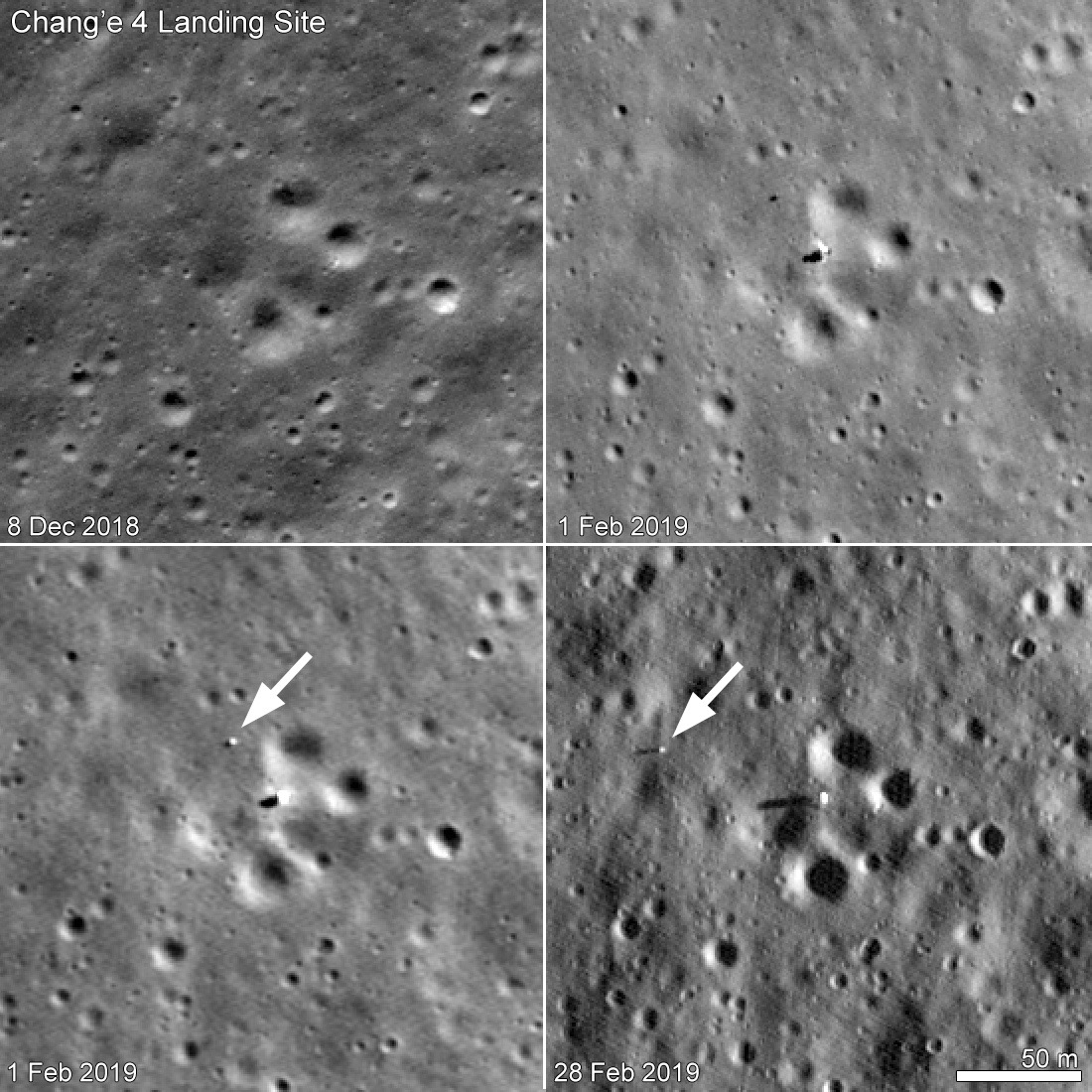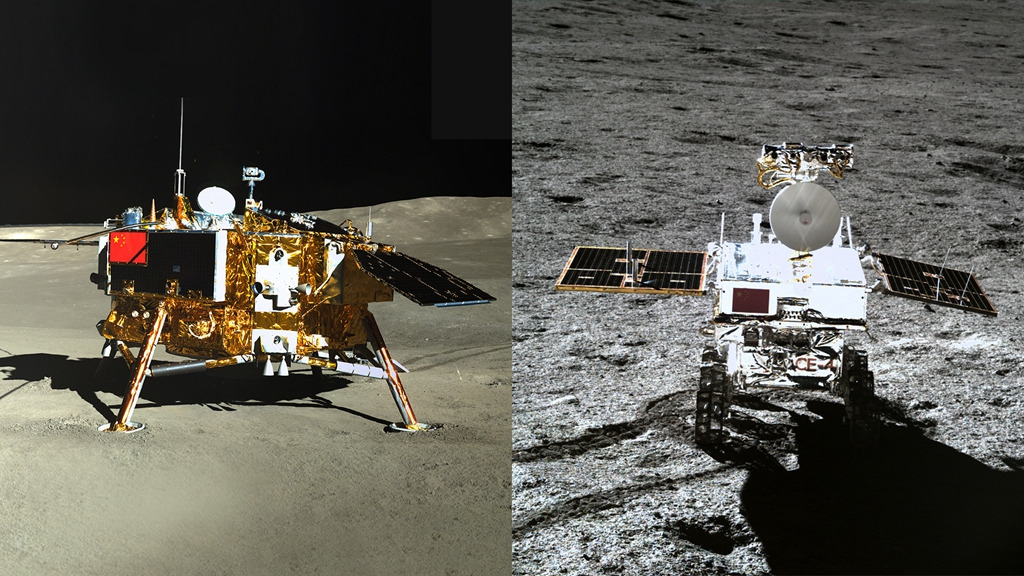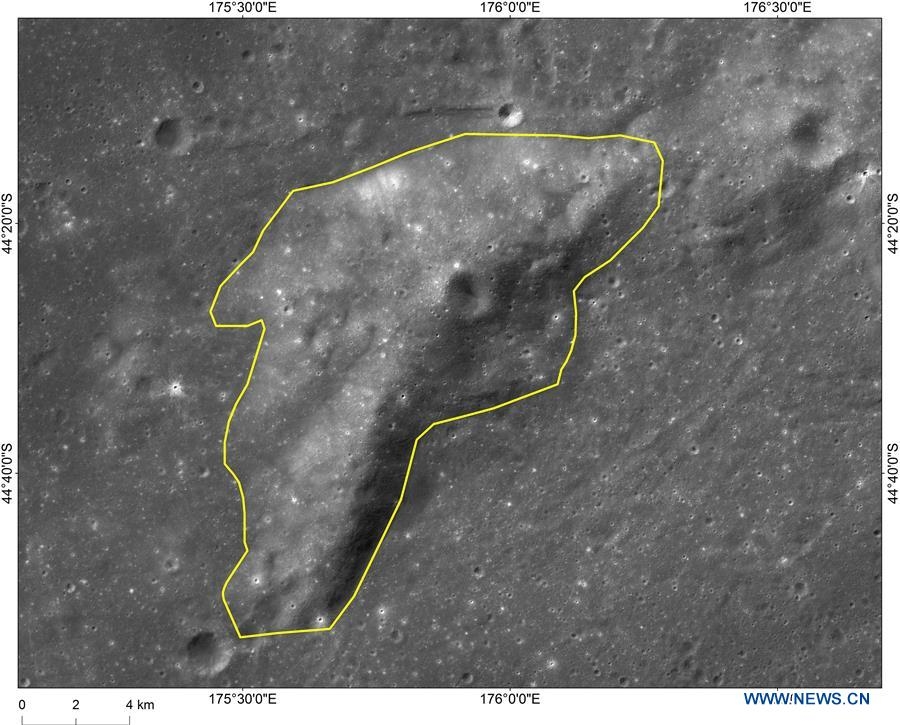NASA Moon Orbiter Tracks Chinese Rover on Lunar Farside (Photos)
LRO is keeping an eye on Yutu 2.

NASA's Lunar Reconnaissance Orbiter (LRO) continues to monitor the whereabouts and wanderings of China's Yutu 2 rover on the moon's far side.
Over the next few months, the sun will rise higher and higher over Yutu 2's landing site when LRO is overhead, providing the opportunity to obtain images with no shadows, according to Mark Robinson, principal investigator of LRO's Lunar Reconnaissance Orbiter Camera (LROC), a three-camera system that captures high-resolution photos of the lunar surface.
Related: China's Chang'e 4 Farside Moon Landing in Pictures

Blast zone
Those upcoming images will be particularly useful for mapping differences in brightness (albedo), Robinson noted. Researchers should therefore soon get their first good looks at the "blast zone" — the region that was brightened around Yutu 2's companion lander as rocket exhaust interacted with the regolith, as seen around all other landing sites.
The tracks of the rover should also be visible in the coming months, allowing researchers to follow Yutu 2's exact path along the floor of Von Kármán Crater, Robinson explained.
Yutu 2 and the lander make up China's Chang'e 4 mission, which touched down inside the 115-mile-wide (186 kilometers) Von Kármán Crater on the night of Jan. 2, 2019. No craft, robotic or crewed, had ever pulled off a soft landing on the moon's far side before.

Westward progress
LRO passes over any given place on the moon at least once every month (in the daylight), allowing the westward progress of the Yutu 2 rover to be seen.
Get the Space.com Newsletter
Breaking space news, the latest updates on rocket launches, skywatching events and more!
Robinson explained that, at the end of February, Yutu 2 was 226 feet (69 meters) from its home base, the Chang'e 4 lander. LROC images show Yutu 2 made 150 feet (46 m) of westward progress during the month of February.
Each month when LRO images the landing site, now called Statio Tianhe, the lighting changes, providing a different view of the surface.
Around dawn and dusk, long shadows enhance topography, Robinson said; closer to noon, differences in surface brightness are more apparent. In the latest LROC image, from Feb. 28, the sun is near the horizon, and the lander and rover both cast long shadows.
- Latest Moon Photos from NASA's Lunar Reconnaissance Orbiter
- China's Chang'e Program: Missions to the Moon
- Latest News About China Space Program
Leonard David is author of the forthcoming book, "Moon Rush: The New Space Race" to be published by National Geographic in May 2019. A longtime writer for Space.com, David has been reporting on the space industry for more than five decades. Follow us on Twitter @Spacedotcom or Facebook. This version of the story published on Space.com.
Join our Space Forums to keep talking space on the latest missions, night sky and more! And if you have a news tip, correction or comment, let us know at: community@space.com.

Leonard David is an award-winning space journalist who has been reporting on space activities for more than 50 years. Currently writing as Space.com's Space Insider Columnist among his other projects, Leonard has authored numerous books on space exploration, Mars missions and more, with his latest being "Moon Rush: The New Space Race" published in 2019 by National Geographic. He also wrote "Mars: Our Future on the Red Planet" released in 2016 by National Geographic. Leonard has served as a correspondent for SpaceNews, Scientific American and Aerospace America for the AIAA. He has received many awards, including the first Ordway Award for Sustained Excellence in Spaceflight History in 2015 at the AAS Wernher von Braun Memorial Symposium. You can find out Leonard's latest project at his website and on Twitter.









